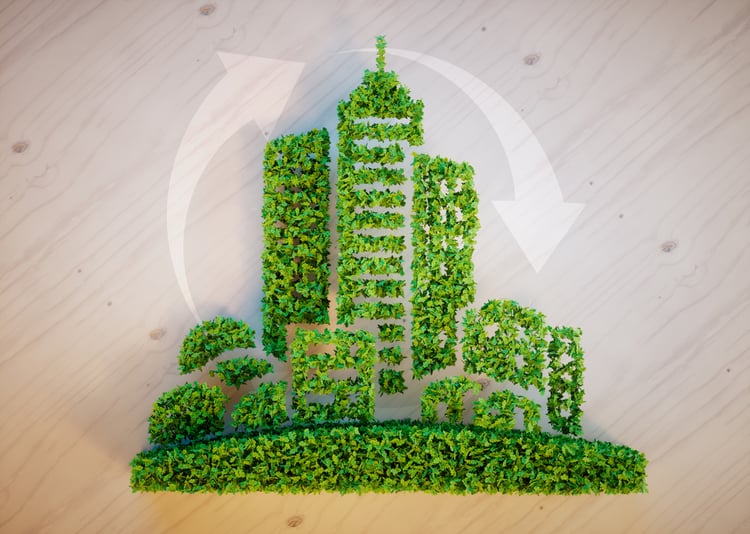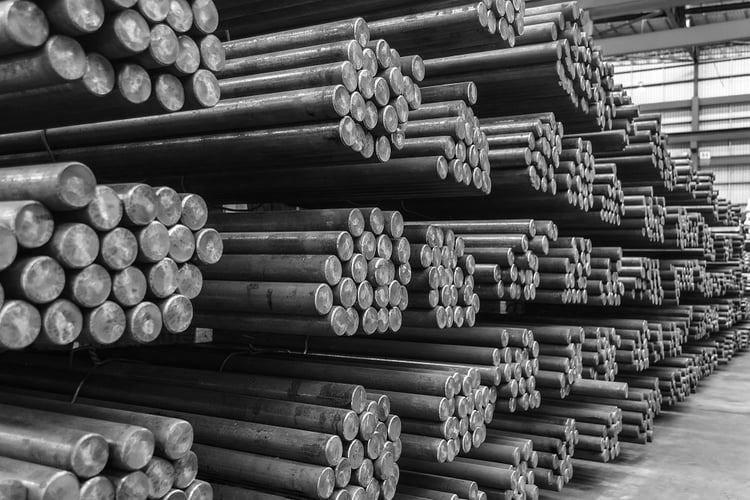Greenhouse gas emissions are often associated with sources such as vehicle traffic, industrial activity and coal-fired power plants. However, the impact of the construction sector is often ignored. According to Architecture 2030, buildings are responsible for almost 40% of GHG emissions worldwide, and 2/3 of the current usable area will still be used in 2050. For comparison, industrial activity is responsible for 32 % of global emissions, while transport represents 23%.
Governments and companies that want to achieve a significant reduction in building emissions cannot limit their efforts to new construction – energy retrofits for existing buildings are also necessary. Unfortunately, less than 1% of existing buildings are renovated annually, meaning modernization projects move at a slow pace.
Get a professional, environmentally friendly MEP design for your next construction project.
Distributed energy generation from clean sources at the point of use can complement modernization projects. Every kilowatt-hour produced on-site with solar panels or other clean technologies is replacing one kilowatt-hour from the grid that could have been generated from fossil fuels.
The role of green buildings in urbanization

Urbanization has accelerated in recent decades and more than 50% of humanity is now concentrated in cities. This trend will not slow down anytime soon: the world population is expected to reach 10 billion people in 2060 and the percentage of the urban population will exceed 66%. Buildings account for 40% of global emissions, as mentioned above. However, when considering cities as a whole, they are responsible for 70% of energy consumption and emissions.
Population growth will create a high demand for buildings in the coming decades, and the global built area is expected to double by 2060. This represents 2.48 billion square feet over four decades, which is equivalent to adding an entire New York City every month, with an increase in the urban population of 1.5 million people per week. Unless these new buildings utilize green design features , their combined environmental impact can be severe. There are three main ways to reduce your emissions:
- Improve energy efficiency, which reduces emissions associated with energy sources.
- Switching to cleaner energy sources, which results in fewer emissions per kilowatt-hour or BTU consumed.
- Reduce emissions associated with construction materials and the construction process.
Since most current buildings will still be used in 2050, decarbonization efforts must consider new projects and existing properties. A different approach is required in each case: Eco-design features only represent a cost increase beyond the baseline in new construction, but often require major changes to existing buildings.
According to the International Energy Agency (IEA), green buildings can contribute to job creation . They estimated that 15-30 additional manufacturing and construction jobs could be created for every $1 million invested in energy efficiency – this includes building renovations and new construction. The International Finance Corporation (IFC) predicted that green buildings could attract total investment of US$24.7 trillion by 2030 in emerging markets.
Embodied carbon: an area of opportunity to reduce building emissions

Decarbonization efforts for the construction sector tend to focus on operations – reducing emissions from existing properties . However, embodied carbon is an area of great opportunity, representing 28% of construction sector emissions and 11% of total emissions.
- The environmental impact of a building begins even before construction, as materials must be extracted and processed, and then transported to project sites.
- Three building materials have a particularly high environmental impact and are responsible for 9% of global emissions: concrete, iron and steel.
Buildings are becoming more efficient in many parts of the world and their direct emissions are being reduced. However, embodied carbon is receiving less attention. Unlike emissions from operations, which can be reduced with retrofits and clean energy, most embodied emissions have already been released when a building opens.
The importance of embodied emissions is already being recognized by green building certification systems. For example, LEED certification awards up to 19 points in the Materials and Resources category, which focuses on reducing the embodied energy and lifecycle impact of building materials. Another example is EDGE certification, which requires a 20% reduction in energy and water consumption, and a 20% reduction in energy embodied in materials .
Conclusion
Urban development is not slowing down anytime soon and green design is key to reducing emissions over time from new buildings. However, retrofitting existing buildings is also important, as most of them will still be in use until 2050. Embodied carbon is another area of opportunity, as a large portion of buildings' emissions are released before they officially open. .

